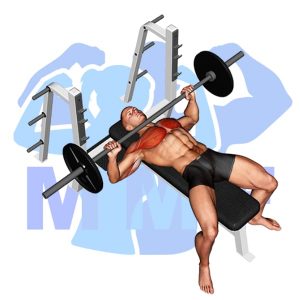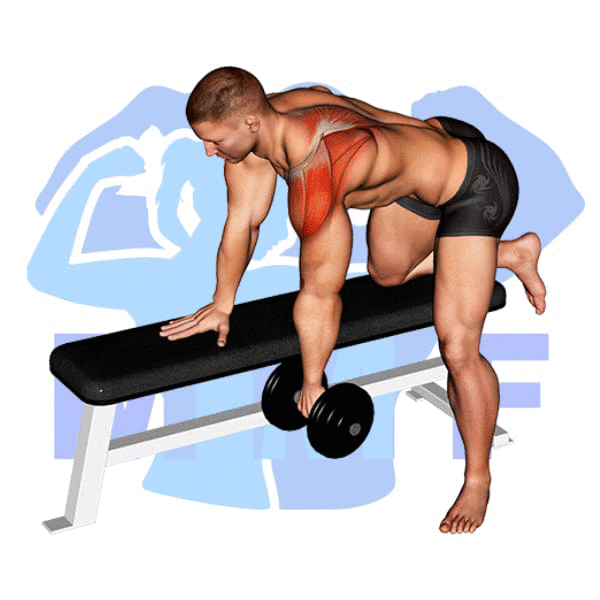If you’re tired of not feeling the burn in your shoulders after doing lateral raises, then it’s time to switch it up and try the lever lateral raise. This exercise is often overlooked and can be a game changer for those struggling to target their lateral deltoids. Don’t worry, you’re not alone, as many gym goers have trouble activating this muscle group during traditional lateral raises. But fear not, with the proper technique and form, the lever lateral raise can be your new go-to exercise for shoulder gains. In this post, we’ll go over how to properly execute the lever lateral raise and the benefits of incorporating it into your shoulder workout routine.
Lever Lateral Raise (Machine) Summary
- Primary Muscles: Deltoid – Lateral
- Secondary Muscles: Deltoid – Anterior, Serratus Anterior, Supraspinatus, Trapezius – Lower, and Trapezius – Middle
- Equipment: Lateral Raise Machine
- Mechanics Type: Isolated
- Force: Pull
- Utility: Basic or Auxiliary

Lever Lateral Raise (Machine) Instructions
- Stand with your feet shoulder width apart and your knees slightly bent.
- Grasp the handles of the lever lateral raise machine with an overhand grip.
- Position your elbows at shoulder height with your palms facing downwards.
- Push the lever arms out to the sides until they are parallel to the floor.
- Slowly return the arms to the starting position and repeat for desired number of reps.
Video Tutorial
Lever Lateral Raise (Machine) Muscles
Target (Agonist)
Synergists
Dynamic Stabilizers
- None
Stabilizers
- Levator Scapulae
- Trapezius – Upper
- Wrist Extensors
Antagonist Stabilizers
- None

Benefits of Lever Lateral Raise (Machine)
The Lever Lateral Raise (Machine) exercise is an effective strength training exercise for targeting the lateral deltoid muscle. This exercise works the lateral deltoid by isolating and challenging the muscle to develop strength and endurance. Performing the Lever Lateral Raise (Machine) exercise regularly will help to strengthen and tone the lateral deltoid, giving it a more defined shape and increasing shoulder stability and mobility. Additionally, as the lateral deltoid is one of the primary muscles used in many upper body movements, strengthening this muscle will provide a powerful boost to overall upper body strength and performance.
Tips for Performing Lever Lateral Raise (Machine)
This exercise is simple yet effective, and once you get the hang of it, you can reap all the benefits that come with it. To get the most out of this exercise, keep these tips in mind to ensure you perform it correctly.
- Ensure you have a full range of motion – To get the most out of the lever lateral raise, make sure you are engaging the full range of motion for the exercise. This means starting with your arms at your sides and then raising them up until they are parallel to the floor and squeezing at the top for a few seconds before slowly returning them back to your sides.
- Keep your core engaged – While performing the lever lateral raise, ensure that you keep your core engaged throughout the exercise. This will help maintain proper form, keep your body aligned, and help to maximize muscle activation.
- Control the weight and tempo – Make sure that you are controlling the weight as you lift and lower it and keeping a slow and steady tempo throughout the entire exercise. By doing this, you will be able to ensure that you are targeting the correct muscles and avoid any unnecessary strain on other areas of your body.
Benefits and Tips Video
Frequent Mistakes To Avoid
As with any exercise, there are certain mistakes to avoid when performing the Lever Lateral Raise. To get the most out of this exercise, it’s important to pay attention to proper form and technique. Not only will this help ensure that you’re maximizing the benefits of the exercise, but it will also help to avoid potential injuries. The following list will highlight common mistakes made while performing this exercise.
- Not engaging your core muscles: Engaging your core muscles is essential when performing any exercise, especially the Lever Lateral Raise. Doing so helps to improve your balance and overall stability, allowing for better execution of the movement and a better overall workout.
- Not using proper form: Proper form is key in any exercise, and the Lever Lateral Raise is no exception. Using improper form can cause strain on the wrong muscles, lead to injury, and can limit the effectiveness of the exercise.
- Not using a full range of motion: Performing a full range of motion is important for getting the most out of any exercise. The Lever Lateral Raise is no exception. Failing to do so can limit the effectiveness of the exercise and reduce its potential benefits.
Find More Machine Exercises Here
Variations and Complementary Exercises
There are many ways to work the same muscles as the Lever Lateral Raise (Machine) exercise. Below is a list of variations, complementary, or alternative exercises that will help you target the same muscles in different ways.
Lying Dumbbell Rear Lateral Raise

The Lying Dumbbell Rear Lateral Raise is a great complement or alternative to the Lever Lateral Raise (Machine). This exercise works the same muscles as the Lever Lateral Raise, specifically the posterior deltoid, but with a slightly different range of motion. It is performed by lying on your stomach on a flat bench, holding two dumbbells with your palms facing each other. Keeping your elbows bent at 90 degrees, lift the dumbbells up to the sides of your shoulders in an arc-like motion, then slowly lower them back down to the starting position. This exercise is great for increasing shoulder stability and can help increase shoulder strength and muscle mass.
One Arm Band Lateral Raise

The One Arm Band Lateral Raise is a great complementary or alternative exercise to the Lever Lateral Raise (Machine). This exercise is performed with a resistance band and can be done while standing or seated. It targets the same muscles as the Lever Lateral Raise (Machine), but with the added benefit of allowing for an increased range of motion. It also requires more balance, coordination, and control throughout the entire movement, making it a great way to challenge your core and stabilizing muscles. This exercise can be done with either arm to help even out strength imbalances, and can be made easier or harder depending on the resistance band used.
Seated Dumbbell Lateral Raise

The Seated Dumbbell Lateral Raise is an effective exercise to target the deltoids muscles, providing a complementary or alternative to the Lever Lateral Raise (Machine). This exercise involves sitting on a bench with a dumbbell in each hand and lifting them to the side until they reach shoulder level. It is important to keep the elbows slightly bent throughout the exercise and to use a slow and controlled motion. By using dumbbells, you can really focus on the individual muscles in the deltoids and can further increase the challenge by adding weight.
Check Out These Top Machine Exercises
Seated Dumbbell Rear Lateral Raise

The Seated Dumbbell Rear Lateral Raise is a great exercise to complement or substitute for the Lever Lateral Raise (Machine). This exercise targets the posterior deltoid muscles and is great for strengthening and building shoulder muscles. To perform this exercise, sit on a bench and hold two dumbbells in each hand, with your palms facing each other. Lift your arms out to the side until they are parallel with the floor and slowly lower them back down. This exercise is great for building shoulder strength and stability, as well as increasing range of motion. Additionally, it can help to improve overall posture and reduce the risk of injury.
Single Arm Lateral Cable Raises

The Single Arm Lateral Cable Raise is an excellent complementary exercise to the Lever Lateral Raise (Machine). It allows you to work each arm independently and can help increase the range of motion. By using a cable, you can isolate the target muscle and ensure that each arm is getting the same amount of resistance. The Single Arm Lateral Cable Raise also works the shoulders, back, and core muscles, making it an effective alternative to the Lever Lateral Raise (Machine).
Single Dumbbell Front Raise

Single Dumbbell Front Raise is a great alternative or complementary exercise to the Lever Lateral Raise (Machine). It is a shoulder exercise that targets the anterior deltoids and helps to build strength and stability in the shoulder muscles. The exercise involves holding a single dumbbell in one hand and lifting it up in front of you, keeping your elbow slightly bent and your shoulder blades retracted. This exercise helps to increase shoulder mobility and stability, which can help to improve overall performance in other exercises such as the Lever Lateral Raise (Machine). The Single Dumbbell Front Raise can also be used as a warm-up exercise before performing more strenuous exercises like the Lever Lateral Raise (Machine).
Find More Shoulders Exercises Here
Opposing Complementary Exercises
In order to create balance in your routine, it’s important to work the opposing muscle groups of the Lever Lateral Raise (Machine). Incorporating exercises that work the opposite muscles will help to prevent injury and will help strengthen and stabilize the muscles used in the Lever Lateral Raise (Machine). Below are a few exercises that can be used to strengthen the opposing muscle groups:
Barbell Bench Press

The barbell bench press is a great complement to the lever lateral raise (machine) exercise. Both exercises target different muscle groups, with the barbell bench press focusing on the chest, shoulders, and triceps while the lever lateral raise targets the shoulders and upper back. By including both exercises in a workout, you can ensure that all the major muscle groups are being exercised. The barbell bench press works the chest, shoulders and triceps in a pushing motion, while the lever lateral raise works the shoulders and upper back in a pulling motion. This opposing motion helps strengthen and balance both muscle groups for improved overall strength and stability.
Barbell Wide Reverse Grip Bench Press

The Barbell Wide Reverse Grip Bench Press is an excellent exercise to pair with the Lever Lateral Raise (Machine) as it targets the opposing muscle group. This exercise works the triceps and chest muscles while the Lever Lateral Raise (Machine) works the shoulders. The Barbell Wide Reverse Grip Bench Press is great for building a strong chest and triceps, as well as strengthening the stabilizer muscles in the back. By pairing these two exercises together, you can ensure that your muscles are receiving balanced and effective training.
Barbell Guillotine Bench Press

The Barbell Guillotine Bench Press is an effective chest exercise that targets the chest muscles. It is a great complement to the Lever Lateral Raise (Machine) exercise, which targets the shoulder muscles. The Barbell Guillotine Bench Press works the chest muscles in an opposite direction, allowing the shoulder muscles to be worked in a different way. This helps to create a balanced and comprehensive workout program, as both exercises target different muscle groups.
Power Up Your Lateral Raises!
To truly maximize your lateral raise workout, it’s important to focus on the mechanics of the exercise. One simple way to achieve this is by using a lever or a cable to take out any unnecessary momentum. This will help you isolate the muscles you are targeting and get the most out of each rep. As with any exercise, proper form is key, so be sure to start with light weight and focus on your technique before increasing the resistance. With consistent practice and focus, you can power up your lateral raises and achieve the results you’re after.
References: Wikipedia | ExRx.net | PubMed.gov | Comprehensive List of Shoulders Machine Exercises




